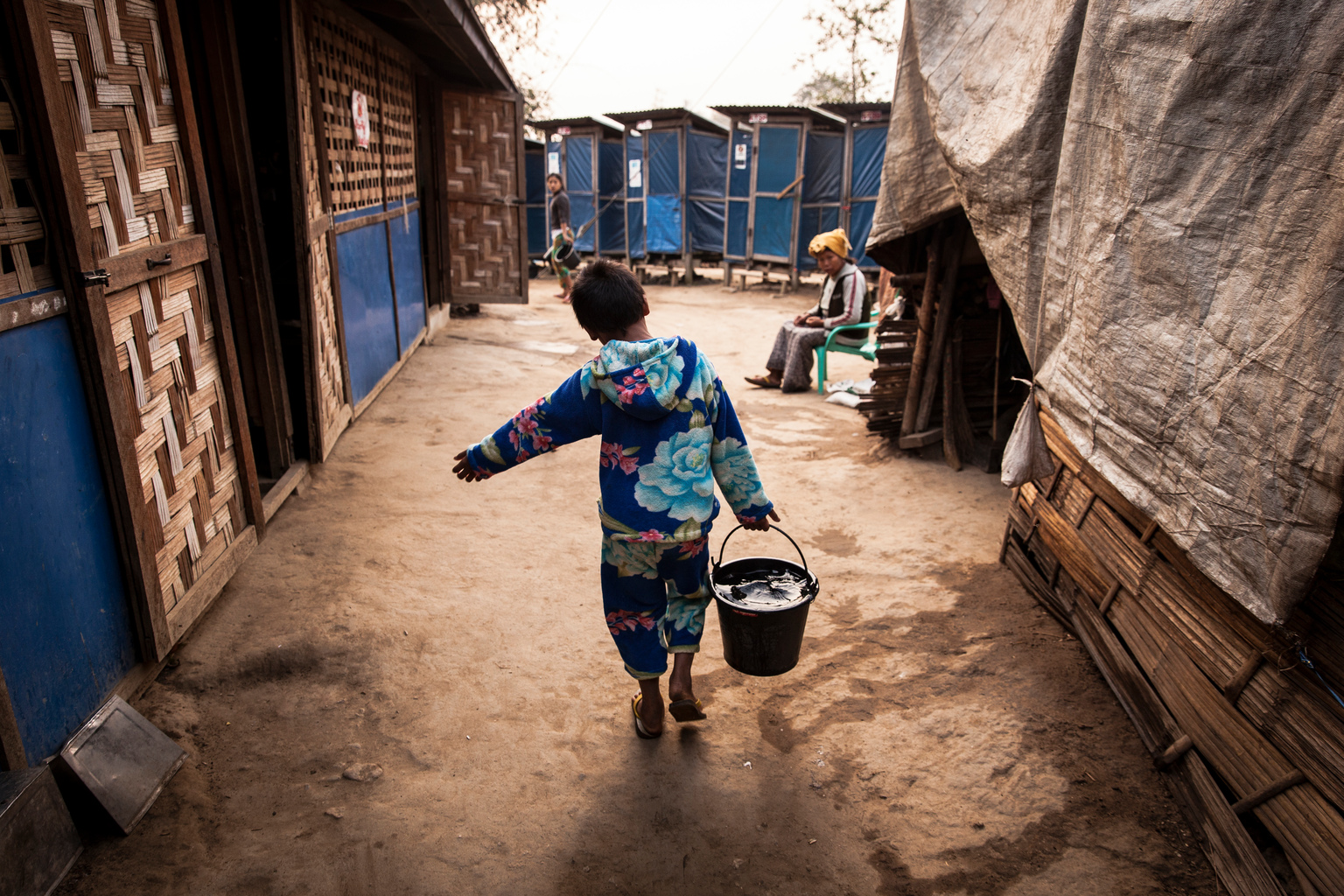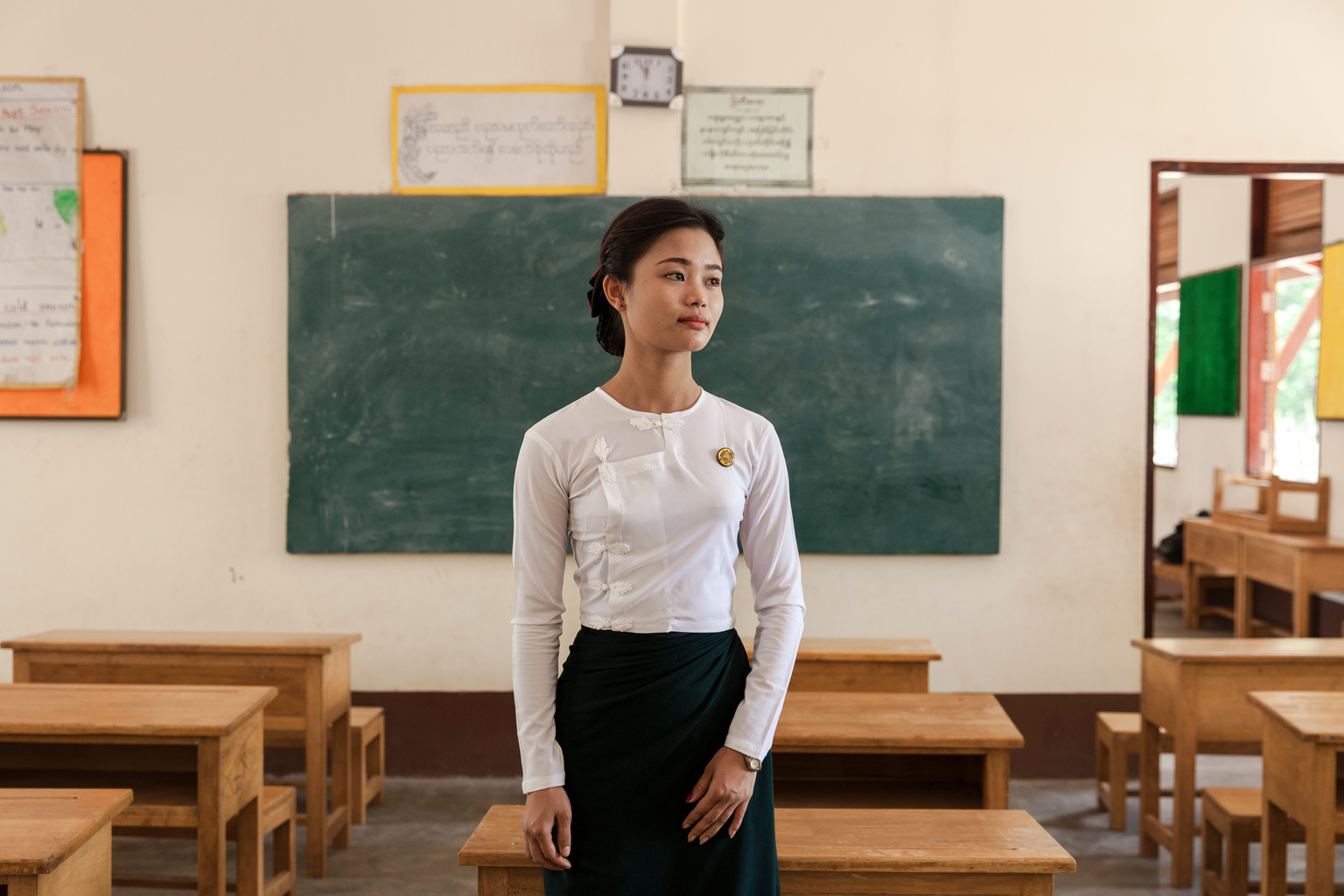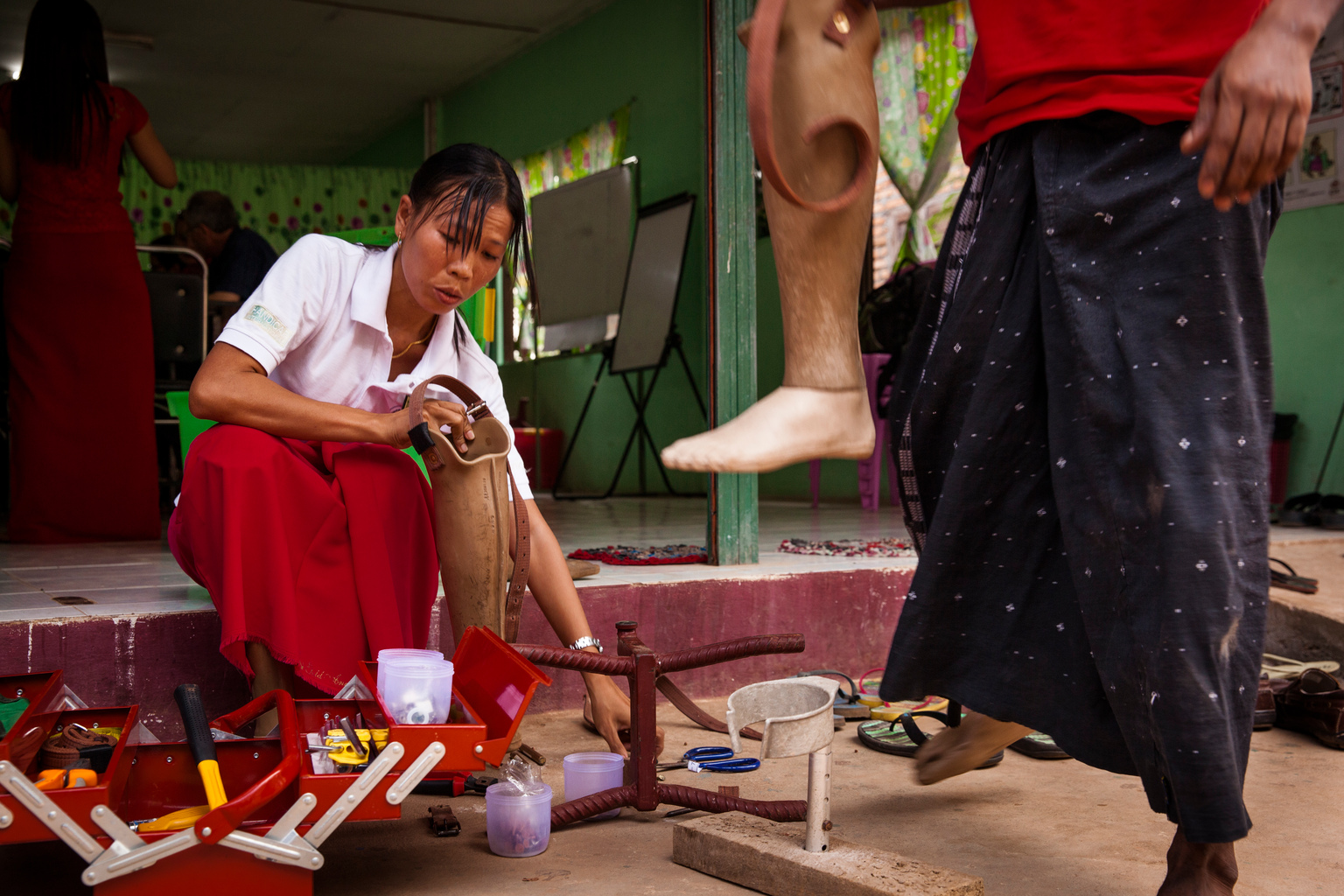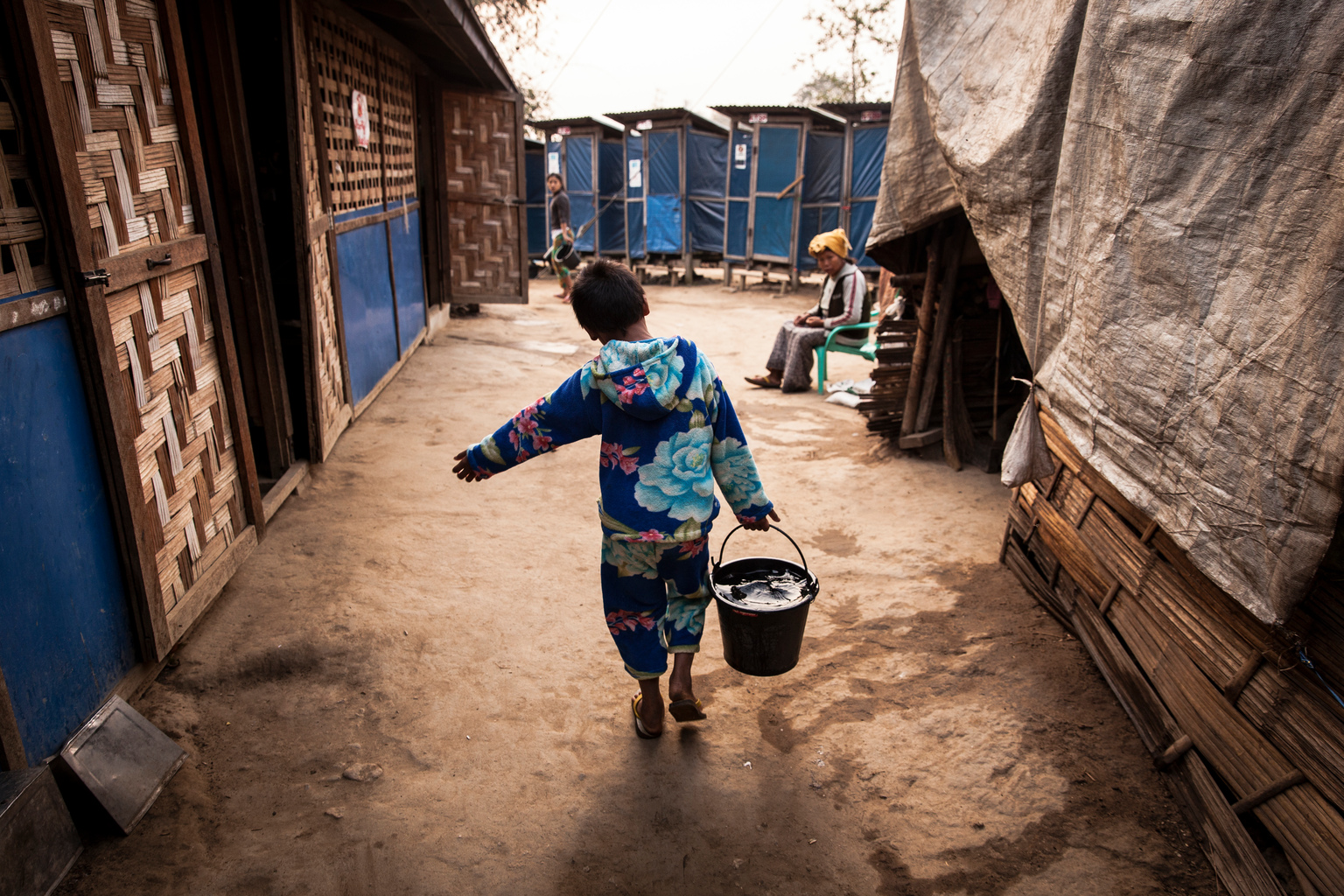© UNICEF/UN059873/Zar Mon
緬甸藏有地雷和未引爆的彈藥,令兒童每天面臨受傷或死亡的威脅
緬甸14個州與地區中,有9個州的土地受現在和以往戰爭遺留下來的地雷和爆炸物污染。緬甸是全世界地雷意外率最高的國家之一。根據緬甸「地雷風險工作組」的資料顯示,平均三天就有一人因地雷受害,每三名受害者中就有一名是兒童。
危機四伏
2017-06-19
© UNICEF/UN059873/Zar Mon 緬甸藏有地雷和未引爆的彈藥,令兒童每天面臨受傷或死亡的威脅 緬甸14個州與地區中,有9個州的土地受現在和以往戰爭遺留下來的地雷和爆炸物污染。緬甸是全世界地雷意外率最高的國家之一。根據緬甸「地雷風險工作組」的資料顯示,平均三天就有一人因地雷受害,每三名受害者中就有一名是兒童。

於克欽邦八莫市的潘哈爾科內國內流離失所者(Phan Khar Kone IDP)營地,12歲的昂丁正前往洗澡。2013年,克欽獨立軍(KIA)與緬甸軍隊爆發戰爭,昂丁的父親放牧時在爆炸中喪生,很可能踩中地雷被炸死。

10歲的閩.西亞(Min Thiya)展示身上的大疤痕。兩年前,他和朋友在克倫邦安卡勞(Ann Ka Law)村的樹林玩耍時,發現未爆炸彈藥並留下傷痕。爆炸導致兩名男童死亡及4人受傷,包括他最好的朋友蘇巴孫。

南莫莫基(Nan Maw Maw Kyi)老師說:「我們總是告訴孩子:如果你在森林發現奇怪或不尋常的東西,永遠不要碰它,應告訴成人。」南莫莫基是最先目睹爆炸現場的其中一員,喚醒人們記起那場持續60多年的衝突。

9歲的蘇巴孫是閩.西亞最好的朋友,她說:「那個東西好像很沉重,金屬也很熱。不知甚麽原因總覺得這個東西很危險。」蘇巴孫也在爆炸中受傷了。
數周前爆發衝突遺留未爆炸藥,懷疑事故因此發生。

新創立的康復中心位於克欽邦密支。圖右為42歲的昂索閔(Aung Soe Min),坐在他旁邊的是33歲的道加(Daung Ja),裝有新的義肢。閔是政府軍人,在掃雷時受傷。加為克欽獨立軍工作,在鋪設地雷時受傷。

33歲的珊珊茉(San San Maw)13歲時因踩到地雷失去了右腿。她目前在克倫邦高克雷由聯合國兒童基金會支助的地雷受害者援助中心當義工,她也在那裡修理義肢。緬甸大約有500萬名人在藏有地雷的地區生活。

緬甸持續的暴力行動繼續影響居住在衝突地區和活動於藏有地雷地區的兒童。如果不再努力實現社會和平和增強社會凝聚力,將會再次出現更多像昂丁一樣的受害者。